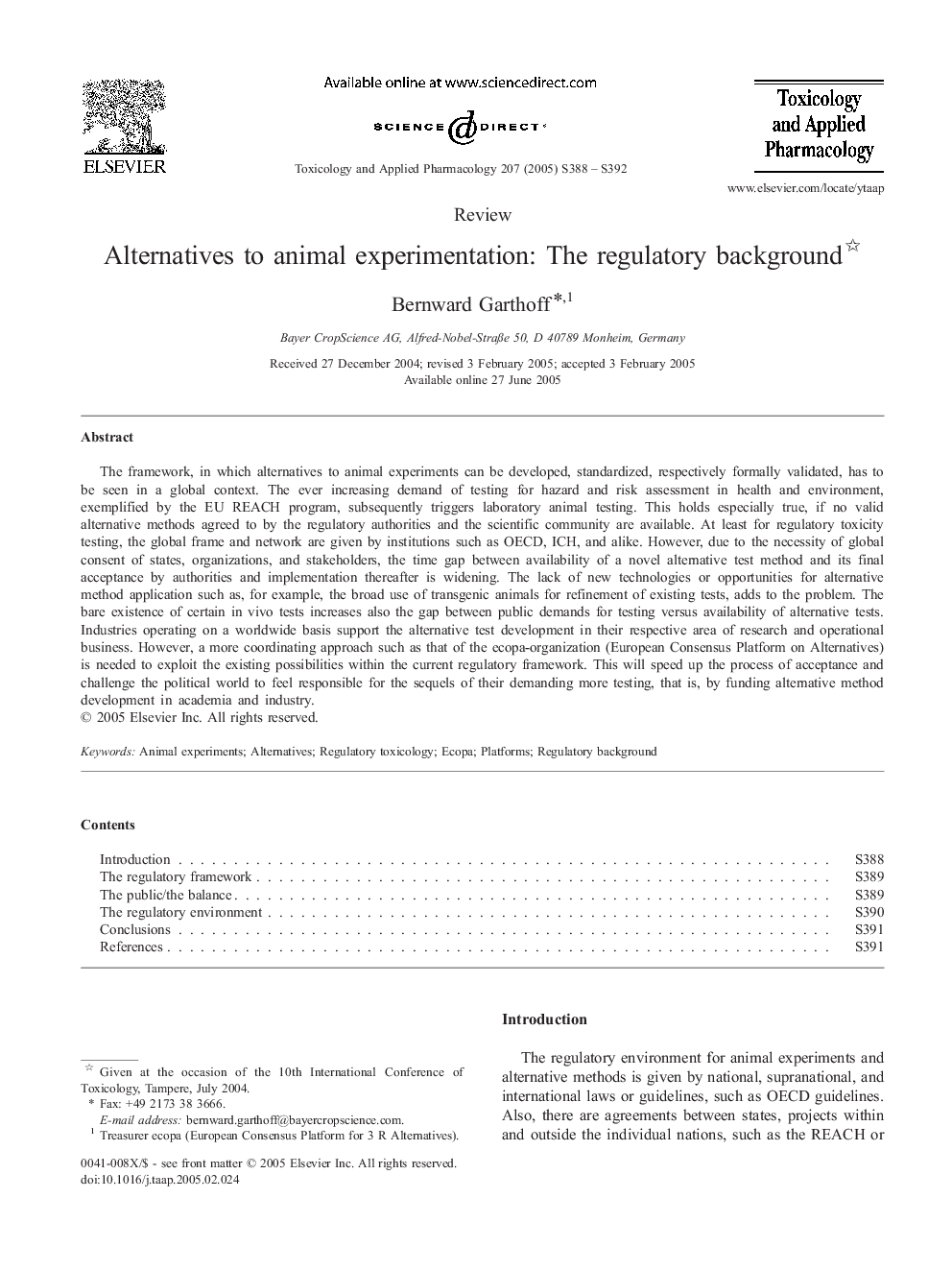| Article ID | Journal | Published Year | Pages | File Type |
|---|---|---|---|---|
| 9017768 | Toxicology and Applied Pharmacology | 2005 | 5 Pages |
Abstract
The framework, in which alternatives to animal experiments can be developed, standardized, respectively formally validated, has to be seen in a global context. The ever increasing demand of testing for hazard and risk assessment in health and environment, exemplified by the EU REACH program, subsequently triggers laboratory animal testing. This holds especially true, if no valid alternative methods agreed to by the regulatory authorities and the scientific community are available. At least for regulatory toxicity testing, the global frame and network are given by institutions such as OECD, ICH, and alike. However, due to the necessity of global consent of states, organizations, and stakeholders, the time gap between availability of a novel alternative test method and its final acceptance by authorities and implementation thereafter is widening. The lack of new technologies or opportunities for alternative method application such as, for example, the broad use of transgenic animals for refinement of existing tests, adds to the problem. The bare existence of certain in vivo tests increases also the gap between public demands for testing versus availability of alternative tests. Industries operating on a worldwide basis support the alternative test development in their respective area of research and operational business. However, a more coordinating approach such as that of the ecopa-organization (European Consensus Platform on Alternatives) is needed to exploit the existing possibilities within the current regulatory framework. This will speed up the process of acceptance and challenge the political world to feel responsible for the sequels of their demanding more testing, that is, by funding alternative method development in academia and industry.
Related Topics
Life Sciences
Environmental Science
Health, Toxicology and Mutagenesis
Authors
Bernward Garthoff,
